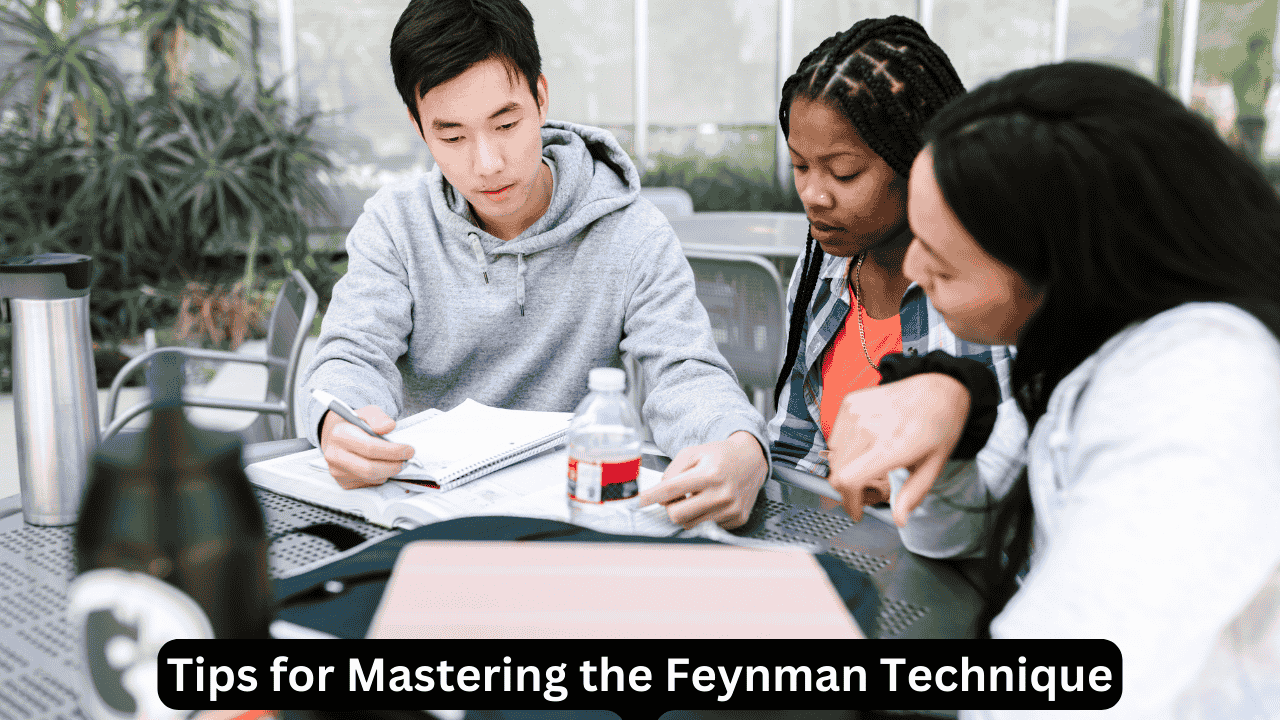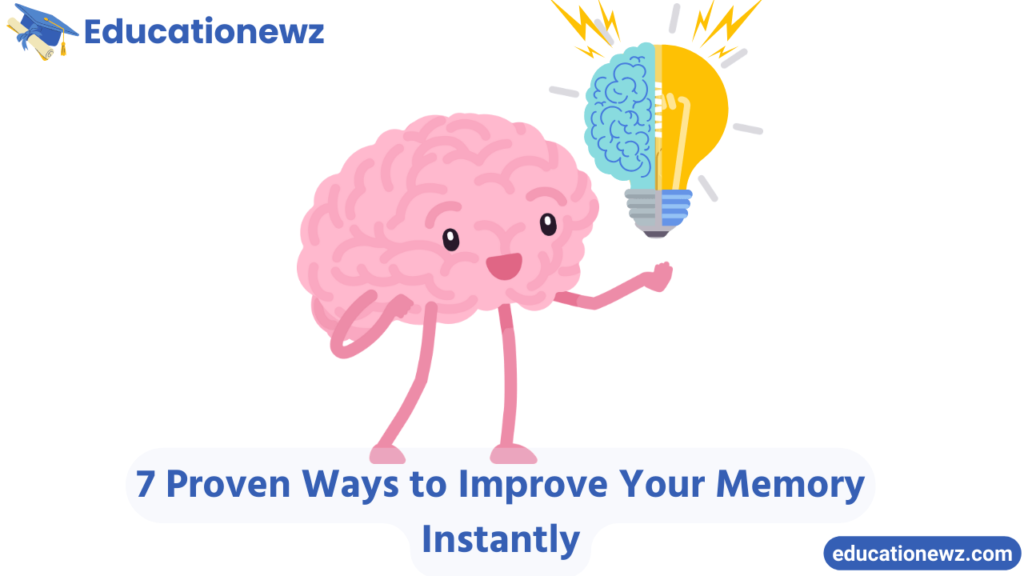The Feynman Technique is a proven method for simplifying complex ideas, identifying knowledge gaps, and mastering concepts by explaining them in simple, clear terms.
Learning new concepts effectively and retaining information for the long term is a challenge many face. The Feynman Technique, named after Nobel Prize-winning physicist Richard Feynman, is a powerful and straightforward learning strategy designed to help individuals grasp even the most complex topics. In this article, we will explore the Feynman Technique in detail, provide practical examples, and outline how to apply it to enhance your learning process.
What is the Feynman Technique?

The Feynman Technique is a four-step process that focuses on simplifying complex ideas into clear and concise explanations. It emphasizes understanding over memorization by breaking concepts down and explaining them in simple terms. This technique is particularly effective because it highlights gaps in your knowledge, allowing you to focus on areas that need improvement.
The four steps of the Feynman Technique are:
- Choose a Concept: Select the topic you want to learn or master.
- Teach It to a Child: Explain the concept in simple terms as if you are teaching it to a child.
- Identify Gaps and Review: Identify any areas where your explanation is lacking or unclear and revisit the source material.
- Simplify and Use Analogies: Refine your explanation further, using analogies and simple language.
Step 1: Choose a Concept
To begin, pick a topic that you find challenging or want to understand more thoroughly. This could be a concept from a school subject, a work-related skill, or a personal area of interest. It’s essential to focus on a specific and well-defined subject.
For instance, if you’re learning about quantum mechanics, start with a fundamental concept such as “wave-particle duality.” Write this topic at the top of a blank sheet of paper. This serves as the foundation for the rest of the process.
Tip: Choosing a concept that genuinely interests you will keep you motivated throughout the learning process.
Step 2: Teach It to a Child
This step is the heart of the Feynman Technique. Imagine you are explaining the topic to a 12-year-old child who has no prior knowledge of the subject. Simplify your explanation by avoiding jargon and using everyday language.
Example:
If you’re explaining “photosynthesis,” break it down like this:
- Plants use sunlight, water, and carbon dioxide to make food.
- Sunlight is like fuel for a car—it provides energy.
- Water and carbon dioxide are ingredients that plants mix to produce sugar and oxygen.
By simplifying the explanation, you’ll notice if there are any parts of the concept you struggle to explain. This highlights areas where your understanding may be incomplete.
Step 3: Identify Gaps and Review
When explaining the concept, you’ll likely encounter areas where your explanation is unclear or incomplete. These gaps are opportunities to deepen your knowledge. Return to your source materials—books, online resources, or lecture notes—to clarify your understanding.
Practical Tip:
- Write down questions as they arise. For example, “Why do plants release oxygen during photosynthesis?”
- Use reliable resources such as scientific journals, textbooks, or credible websites to find answers.
By addressing these gaps, you’re not just filling in missing information but also reinforcing your knowledge through active engagement.
Step 4: Simplify and Use Analogies
Once you’ve reviewed the material, refine your explanation further. Incorporate analogies to make the concept relatable and memorable. Analogies link new information to something familiar, enhancing comprehension.
Example:
Instead of saying, “Electricity flows through a circuit,” you could say, “Electricity moves like water through pipes. The wires are the pipes, and the electricity is the water flowing through them.”
This step ensures your explanation is both accurate and easy to understand, making it suitable for sharing with others or reinforcing your own learning.
Benefits of the Feynman Technique
The Feynman Technique offers several advantages:
- Deep Understanding: Forces you to understand concepts at a fundamental level.
- Retention: Simplifying and explaining material helps commit it to long-term memory.
- Problem Solving: Highlights knowledge gaps, encouraging critical thinking and resourceful learning.
- Communication Skills: Improves your ability to convey complex ideas clearly and effectively.
These benefits make the Feynman Technique a versatile tool for students, professionals, and lifelong learners alike.
Examples of Applying the Feynman Technique
Example 1: Learning a New Programming Language
- Step 1: Choose a concept such as “loops in Python.”
- Step 2: Explain it as: “A loop is like a washing machine that repeats the same process multiple times until the clothes are clean. In Python, we use specific commands to tell the machine how many times to repeat.”
- Step 3: Identify gaps such as, “What happens if the loop never ends?”
- Step 4: Use an analogy: “An endless loop is like a washing machine stuck on the rinse cycle, spinning forever.”
Example 2: Mastering Personal Finance Concepts
- Step 1: Choose a topic like “compound interest.”
- Step 2: Explain it simply: “Compound interest is like planting a tree. Over time, the tree grows and produces seeds, which grow into more trees.”
- Step 3: Identify questions such as, “How is compound interest calculated?”
- Step 4: Refine the analogy and use a formula to solidify understanding.
Comparison of Feynman Technique vs Traditional Study Methods
| Aspect | Feynman Technique | Traditional Study Methods |
|---|---|---|
| Focus | Understanding through simplification | Memorization and repetition |
| Knowledge Gaps | Actively identifies and addresses gaps | Often overlooked |
| Retention | High due to active engagement | Moderate, depends on review frequency |
| Suitable for Complex Topics | Yes, encourages deep learning | Sometimes leads to superficial knowledge |
Tips for Mastering the Feynman Technique

- Be Patient: Simplifying complex topics takes time. Don’t rush the process.
- Practice Regularly: Use the technique consistently to strengthen your learning skills.
- Teach Others: Explaining concepts to friends or colleagues reinforces your understanding.
- Use Visual Aids: Incorporate diagrams, charts, or drawings to complement your explanations.
- Stay Curious: Embrace gaps in your knowledge as opportunities to learn and grow.
FAQs About the Feynman Technique
1. What is the main purpose of the Feynman Technique?
The primary goal is to simplify complex ideas and ensure deep understanding by explaining them in simple terms.
2. Who can benefit from the Feynman Technique?
Students, professionals, and anyone seeking to improve their learning and communication skills can benefit.
3. How does the Feynman Technique improve memory?
By actively engaging with the material and identifying gaps, you solidify your understanding and retain information for longer.
4. Can the Feynman Technique be used for any subject?
Yes, it is versatile and can be applied to topics ranging from science and mathematics to arts and humanities.
5. What if I’m unable to simplify a topic?
This indicates a gap in your understanding. Revisit the source material, seek additional resources, and try again.
6. How long does it take to learn a concept using the Feynman Technique?
The time depends on the complexity of the topic and your prior knowledge. However, the method ensures efficient learning.
7. What are some challenges with the Feynman Technique?
It requires effort, patience, and a willingness to confront gaps in your knowledge, which can be time-consuming.
8. Can I use the Feynman Technique with group learning?
Yes, teaching peers or engaging in discussions can enhance the technique’s effectiveness.
Conclusion
The Feynman Technique is a powerful and proven method to learn faster, understand deeply, and retain knowledge for the long term. By breaking down concepts, teaching them in simple terms, and addressing gaps in understanding, you not only master topics but also improve your ability to communicate complex ideas effectively. Whether you’re a student, professional, or lifelong learner, this technique can transform the way you approach learning. Please follow our blog Educationewz.



